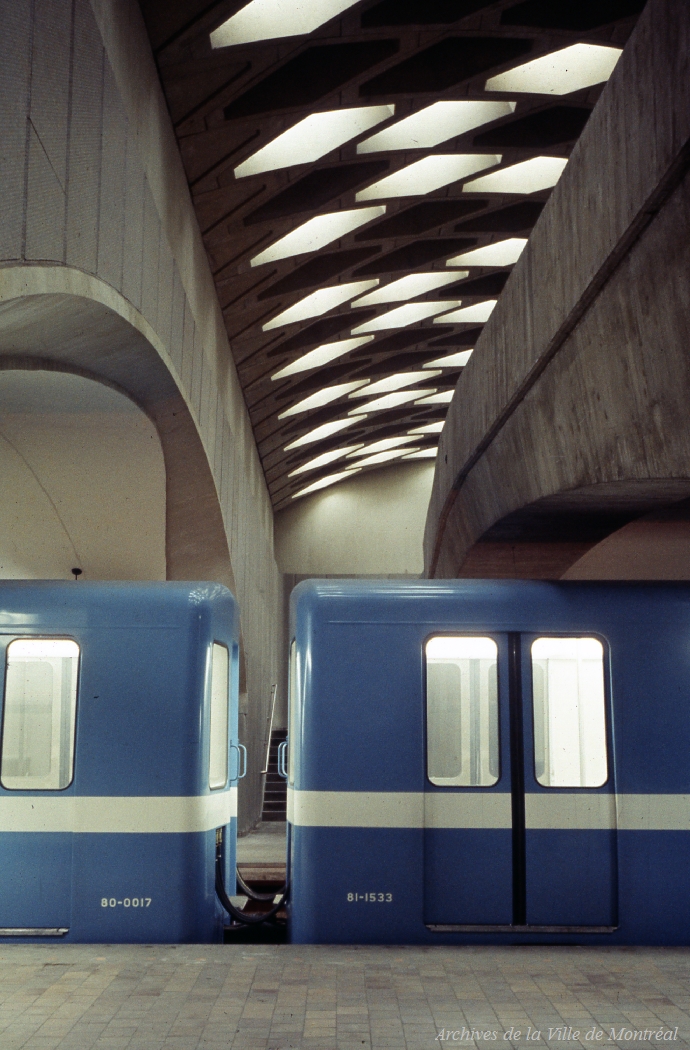Browse "Urban Affairs"
-
Article
Census Metropolitan Area
Census Metropolitan Area (CMA) is a geographical area created by Statistics Canada for the purposes of collecting and organizing data for large urbanized areas.
"https://development.thecanadianencyclopedia.ca/images/tce_placeholder.jpg?v=e9dca980c9bdb3aa11e832e7ea94f5d9" // resources/views/front/categories/view.blade.php
https://development.thecanadianencyclopedia.ca/images/tce_placeholder.jpg?v=e9dca980c9bdb3aa11e832e7ea94f5d9
-
Article
City Beautiful Movement
Some historians have noted that the City Beautiful Movement in Canada was hampered by the lack of an integrated philosophy and the absence of an articulate national spokesperson. However, the amateur side of the movement was lively and active on the local scene.
"https://d2ttikhf7xbzbs.cloudfront.net/media/media/a29051d0-2d36-4156-a9d5-8906d37f1ae1.jpg" // resources/views/front/categories/view.blade.php
https://d2ttikhf7xbzbs.cloudfront.net/media/media/a29051d0-2d36-4156-a9d5-8906d37f1ae1.jpg
-
Article
Housing Rights in Canada
The right to housing is a subject of increasing concern and discussion in Canadian society. The debate regarding the scope and application of housing rights in Canadian law, and the extent to which Canadians may claim these rights as fundamental legal rights, has become even more contentious in recent decades. The growing awareness of housing rights has been brought on by several factors, including: the housing crisis, gentrification, the general lack of affordable housing and the rise of people experiencing homelessness and living in encampments in Canadian cities (see Homelessness in Canada). The development and ongoing implementation of a federal regulatory and policy framework, the National Housing Strategy Act (2019), has also contributed to discussion about housing as a human right.
"https://development.thecanadianencyclopedia.ca/images/tce_placeholder.jpg?v=e9dca980c9bdb3aa11e832e7ea94f5d9" // resources/views/front/categories/view.blade.php
https://development.thecanadianencyclopedia.ca/images/tce_placeholder.jpg?v=e9dca980c9bdb3aa11e832e7ea94f5d9
-
Article
Montreal Metro
The Montreal metro opened on 14 October 1966. The second Canadian subway system after Toronto’s, which opened in 1954, the Montreal metro was the first subway in North America to run on rubber tires instead of metal wheels. Extensions to the Montreal metro were built on Montreal Island over the two decades after it opened, and then to the city of Laval, on the island of Île Jésus, during the 2000s. The system runs entirely underground, and each station has a distinct architecture and design. The Montreal metro consists of four lines running a total of 71 km and serving 68 stations. In 2018, its passengers made more than 383 million trips.
"https://d2ttikhf7xbzbs.cloudfront.net/media/media/7cb43abc-85f5-4380-adb4-56f13bfebb41.jpg" // resources/views/front/categories/view.blade.php
https://d2ttikhf7xbzbs.cloudfront.net/media/media/7cb43abc-85f5-4380-adb4-56f13bfebb41.jpg
-
Article
Residential Segregation
Anthony Richmond, in Global Apartheid (1994), suggests that refugees, racism and the new world order are integrally tied to social spatial segregation of peoples. The word apartheid literally means "aparthood" (neighbour-hood), that is, the separation of people into different areas.
"https://development.thecanadianencyclopedia.ca/images/tce_placeholder.jpg?v=e9dca980c9bdb3aa11e832e7ea94f5d9" // resources/views/front/categories/view.blade.php
https://development.thecanadianencyclopedia.ca/images/tce_placeholder.jpg?v=e9dca980c9bdb3aa11e832e7ea94f5d9
-
Article
Sustainability in Canada
Sustainability is the ability of the biosphere, or of a certain resource or practice, to persist in a state of balance over the long term. The concept of sustainability also includes things humans can do to preserve such a balance. Sustainable development, for instance, pairs such actions with growth. It aims to meet the needs of the present while ensuring that future people will be able to meet their needs.
"https://d2ttikhf7xbzbs.cloudfront.net/media/new_article_images/Sustainability/Planet_earth.jpg" // resources/views/front/categories/view.blade.php
https://d2ttikhf7xbzbs.cloudfront.net/media/new_article_images/Sustainability/Planet_earth.jpg
-
Article
Urban and Regional Planning
In broadest terms, urban and regional planning is the process by which communities attempt to control and/or design change and development in their physical environments.
"https://d2ttikhf7xbzbs.cloudfront.net/media/media/642ac9d3-c99a-4d8a-8ce3-12fea5b135c5.jpg" // resources/views/front/categories/view.blade.php
https://d2ttikhf7xbzbs.cloudfront.net/media/media/642ac9d3-c99a-4d8a-8ce3-12fea5b135c5.jpg
-
Article
Urban Citizen Movements
Urban Citizen Movements are community groups that are often organized around concerns about land use and the way planning decisions are made in local government. These concerns can be summed up respectively by the familiar slogans "Protect our neighbourhood" and "Open up city hall.
"https://development.thecanadianencyclopedia.ca/images/tce_placeholder.jpg?v=e9dca980c9bdb3aa11e832e7ea94f5d9" // resources/views/front/categories/view.blade.php
https://development.thecanadianencyclopedia.ca/images/tce_placeholder.jpg?v=e9dca980c9bdb3aa11e832e7ea94f5d9
-
Article
Urban Design
Urban design can be applied to the whole city (as in KITIMAT), to well-defined units of the city (as in Don Mills in Toronto) and to individual streets and clusters of buildings. The earliest extant examples of urban design in Canada are designs for the whole city.
"https://development.thecanadianencyclopedia.ca/images/tce_placeholder.jpg?v=e9dca980c9bdb3aa11e832e7ea94f5d9" // resources/views/front/categories/view.blade.php
https://development.thecanadianencyclopedia.ca/images/tce_placeholder.jpg?v=e9dca980c9bdb3aa11e832e7ea94f5d9
-
Article
Urban Reform
Urban reform refers to a loosely knit set of municipal government and citizen group initiatives, from the late 1890s to the end of the First World War and from the late 1960s to the mid-1970s, aimed at improving city life.
"https://development.thecanadianencyclopedia.ca/images/tce_placeholder.jpg?v=e9dca980c9bdb3aa11e832e7ea94f5d9" // resources/views/front/categories/view.blade.php
https://development.thecanadianencyclopedia.ca/images/tce_placeholder.jpg?v=e9dca980c9bdb3aa11e832e7ea94f5d9
-
Article
Urban Studies
Urban studies is the study of Canada's urban development in all its diverse aspects, including the evolution of communities (urban history); city-building processes (urban geography, urban economics, planning, architecture); urban politics and government (urban political science); and urban society (urban sociology and anthropology, urban demography).
"https://development.thecanadianencyclopedia.ca/images/tce_placeholder.jpg?v=e9dca980c9bdb3aa11e832e7ea94f5d9" // resources/views/front/categories/view.blade.php
https://development.thecanadianencyclopedia.ca/images/tce_placeholder.jpg?v=e9dca980c9bdb3aa11e832e7ea94f5d9
-
Article
Urban Transportation
Horse-drawn trams were a vast improvement, but they were far from ideal transportation. Heavy loads could not be hauled, and horses were expensive and required frequent rest periods; they also polluted the streets.
"https://d2ttikhf7xbzbs.cloudfront.net/media/media/f1606166-71f5-45eb-b06b-09708d15f571.jpg" // resources/views/front/categories/view.blade.php
https://d2ttikhf7xbzbs.cloudfront.net/media/media/f1606166-71f5-45eb-b06b-09708d15f571.jpg
-
Article
Urbanization
Urbanization is a complex process in which a country's population centres tend to become larger, more specialized and more interdependent over time.
"https://d2ttikhf7xbzbs.cloudfront.net/media/media/cbc449d0-86e4-4fe8-ae48-4cb7e075ed46.jpg" // resources/views/front/categories/view.blade.php
https://d2ttikhf7xbzbs.cloudfront.net/media/media/cbc449d0-86e4-4fe8-ae48-4cb7e075ed46.jpg
